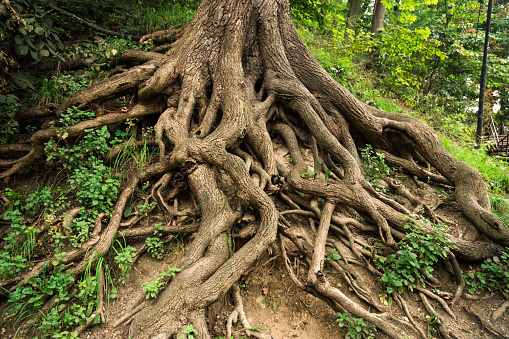- 1-905-452-8193
- Contact Us
- Member Login
- Get Listed Today
- 220,911 members

Experts in tree removal Canberra know that the roots are an essential part of the shrub. They are responsible for providing the tree with water and nutrients, anchoring the tree into the ground, and storing food for the tree. Without roots, a tree would not be able to survive.
The roots of a tree are typically located underground, out of sight. However, they can sometimes be seen above ground, especially if the tree is young or has been damaged. Even though we don't often see them, roots play a vital role in the life of a tree.
One of the most important functions of roots is to anchor the tree into the ground. This prevents the tree from being blown over by strong winds or knocked down by heavy rains. The roots also help to support the weight of the tree, especially when it is laden with leaves or fruit.
Another important function of roots is to absorb water and nutrients from the soil. The roots act like a sponge, soaking up water and nutrients that the tree needs to survive. They then transport these substances up to the rest of the tree through the trunk.
Roots also store food for the tree. This food is in the form of carbohydrates, which are essential for the growth and development of the tree. When a tree doesn't have enough food, its leaves will begin to turn yellow and it will stop growing.
As you can see, roots play a vital role in the life of a tree. They are responsible for providing the tree with water and nutrients, anchoring the tree into the ground, and storing food for the tree. Without roots, a tree would not be able to survive.
There are several reasons why tree roots should not be pruned.
It can damage the tree.
Pruning tree roots can damage the tree itself, as it can cut into the bark and affect the flow of sap. This can weaken the tree and make it more susceptible to disease and pests.
It can make the tree unstable.
Pruning tree roots can also make the tree unstable, as it can reduce its ability to anchor itself in the ground. This can make it more likely to fall over in strong winds or during a storm.
It can kill the tree.
In some cases, pruning tree roots can kill the tree. This is because the roots are responsible for transporting water and nutrients from the soil to the rest of the tree. If they are damaged or removed, the tree will no longer be able to take in these vital resources and will eventually die.
It can damage nearby plants.
When roots are pruned, it can also damage nearby plants. This is because the roots help to support the surrounding soil and keep it in place. If they are removed, the soil can become loose and unstable, which can damage or kill other plants that are growing nearby.
It can create a safety hazard.
Pruning tree roots can also create a safety hazard. This is because the roots help to support the weight of the tree. If they are removed, the tree can become top-heavy and unstable, which can pose a danger to people and property.
It can cause subsidence.
In some cases, pruning tree roots can cause subsidence. This is because the roots help to stabilise the ground around the tree. If they are removed, the ground can become unstable and start to sink. This can damage buildings and pavements that are nearby.
It can lead to court action.
If you prune tree roots without permission, you could be taken to court by your neighbours or the local authority. This is because you could be causing damage to their property or posing a danger to them.
It can be expensive.
Pruning tree roots can be a costly exercise, as you will need to hire a tree surgeon or arborist to do the work for you. You may also need to pay for repairs if you cause any damage to your property or that of your neighbours.
In most cases, it is best to leave tree roots alone and not try to prune them. This is because the risks far outweigh any benefits that you might gain from doing so. If you are unsure about whether or not you should prune tree roots, you should speak to a tree surgeon or arborist for advice.
